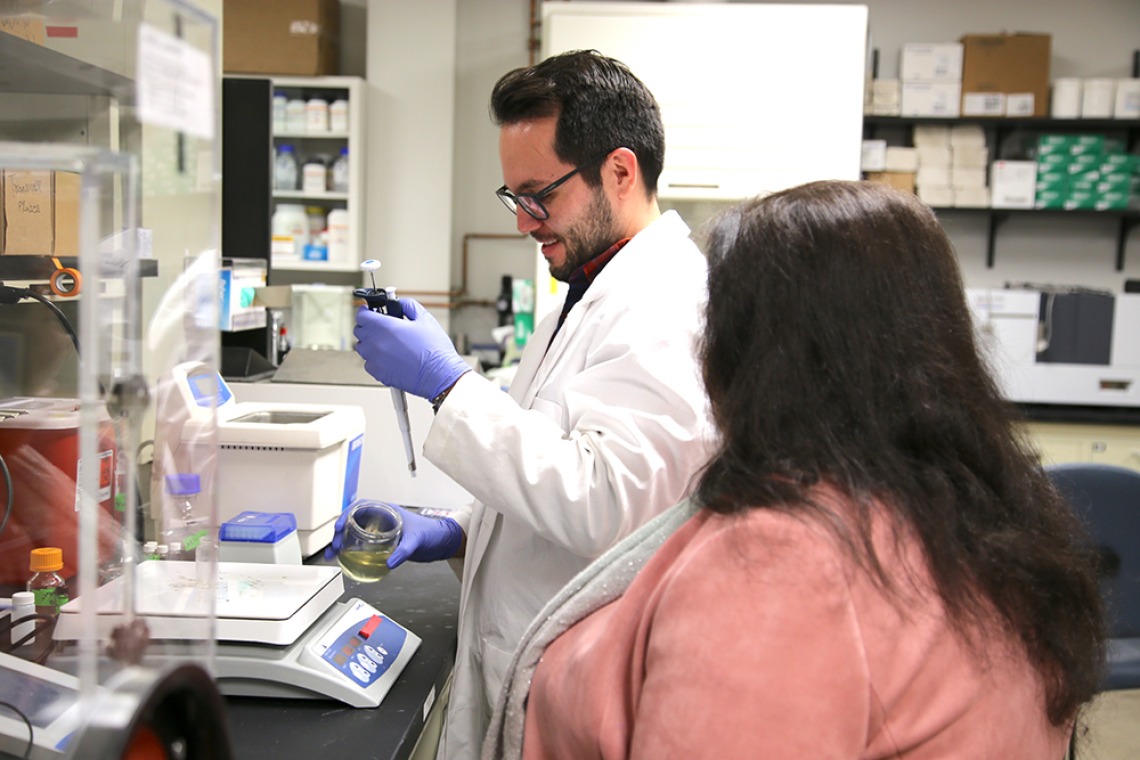Tech Blog: Suramin Repurposed to Fight Oral Mucositis and Diabetic Foot Ulcers

Hear about this invention directly from Drs. Mansour and Schnellman in this Tech Blog video.
Researchers at the University of Arizona College of Pharmacy have reformulated the use of Suramin, a 100-year old drug previously used to treat African sleeping sickness, for the purposes of fighting oral mucositis and diabetic foot ulcers. This breakthrough development has the potential to benefit hundreds of thousands of patients whose current healing options are either partially effective or painful and invasive.
Oral mucositis – ulcers and sores of the mouth and throat – is a common side effect of chemotherapy and radiation in cancer patients of the head and neck. Approximately 40 percent of chemotherapy and 100 percent of all radiation patients develop oral mucositis. This side effect is riddled with symptoms such as trouble breathing, swallowing, and eating, as well as intense pain and an overall decline in quality of life. If left untreated, these sores may lead to life-threatening infections.
People with diabetes face a related problem: diabetic foot ulcers. These ulcers, the most common complication that diabetic patients experience, directly result in 85 percent of diabetes-related amputations and present yet another unmet medical need which Suramin is well-equipped to meet.
Dr. Heidi Mansour, Associate Professor in the College of Pharmacy and Director of Pharmaceutics/Pharmacokinetics, and Dr. Rick Schnellmann, Dean of the College of Pharmacy and Professor of Pharmacology and Toxicology, teamed up with Dr. Keith Kirkwood at the Medical University of South Carolina to create a reformulated version of Suramin. When Schnellmann returned to the UArizona in 2016 – his alma mater where he earned his doctorate – he and Mansour began examining the drug as a treatment for topical wounds.
They soon realized that Suramin’s properties exhibited great promise for wound healing. Mansour’s expertise in drug delivery combined with Schnellmann’s pharmacological expertise led them to develop a series of application methods for the new medication. These creams, ointments, hydrogels, nanoparticles, and viscous liquids are all possible topical products that can leverage Suramin for the treatment of both oral mucositis and diabetic foot ulcers, providing an easy-to-use, self-administered alternative to injections.
According to Mansour, a medication like this could be a boon for patients who suffer from these ailments:
“What’s exciting about this is that it’s a first-in-class treatment for two large patient populations in a space where there is a big unmet medical need, both in the diabetic population and in the cancer population. These complications are therapeutically-limiting, meaning it affects how those diseases are treated.”
Dr. Schnellmann, always with an eye to the real-world application of the college’s discoveries, notes that commercializing discoveries developed through research should be on the mind of every researcher.
“Commercialization is key for the future of the college,” he said. “Part of the purpose of the research that the College conducts is to create a drug that will be viable in the marketplace and benefit the patients that it targets. There tends to be higher success rate in repurposing an existing drug, which is what we have done here.”
Both researchers look forward to working with TLA to grow their connections with industry to move this discovery towards commercialization.

